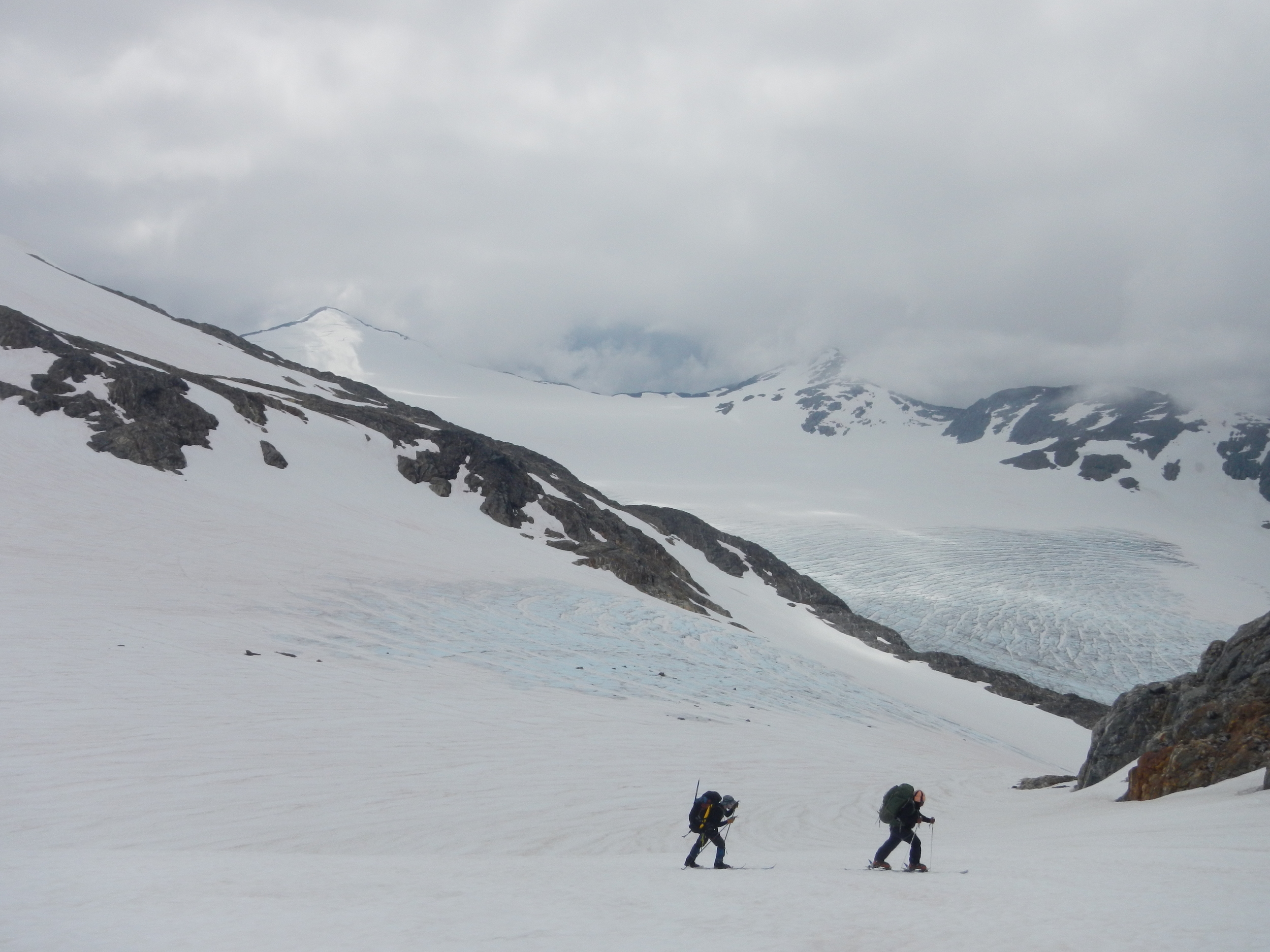by Gillian Rooker
For those of you reading, I won’t be deceiving
Living on an icefield is hard.
It’s dirty yet white, the rain is a fright
Clouds hover over camp like a guard.
Once you arrive, you mutter, “how will I survive?”
That hike was like hell never ending.
And inside the camp, you notice “hmm, everything’s damp.”
Oh… Wow, that trench-foot could sure use some mending.
Day after day, we do the plan of the day
Learning ‘bout safety, science and skiing.
So when out in the white, we’ll know more how to fight
Against the hardships we’ll probably be seeing.
PITS! Dig till you’re weary, yours will also get hairy,
There’s no showering up here you see.
We smell but no one’s cried, since our olfactories have died
But air passengers, prepare once we’re free.
Blisters here and there, but mostly everywhere
It’s a struggle and a constant fight.
But these JIRPers you see, we stay happily
We know it will all be alright.
Fast friends we have made, these bonds we will save
It’s good that we all are so close
‘Cause out on a ski, when someone needs to pee
There’s nothing we can do but be close.
Camps 10 and 17, 26 and 18
We traverse unlike most of the masses.
It truly is far, a total of 70 miles (no car)
Writing this I think, “Damn, we’re badasses!”
JIRPers are strange, our hobbies they range
From furrows to pole dancing and more.
But it’s not what you think, although we all stink
Living here is anything but a chore.
























